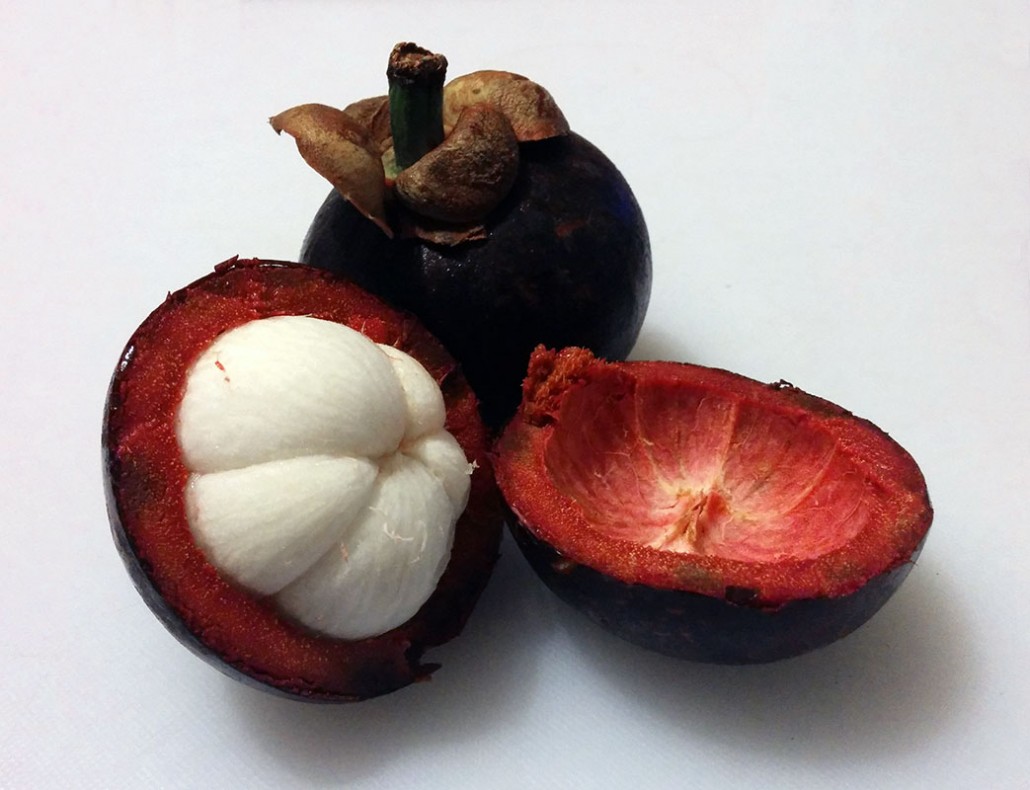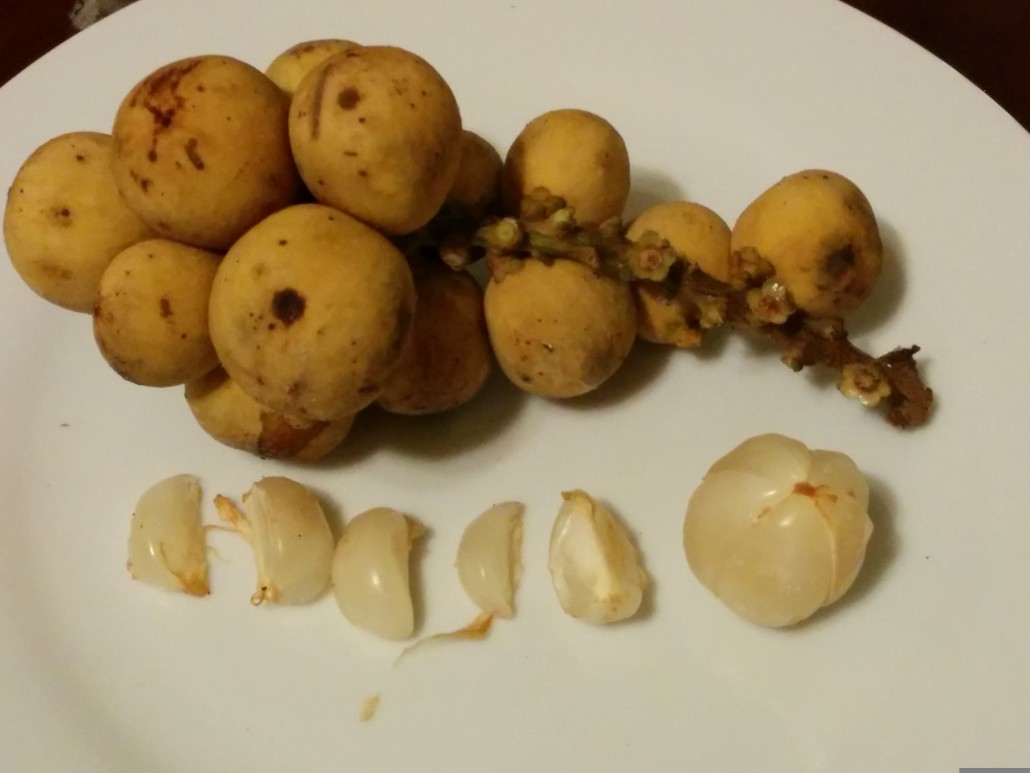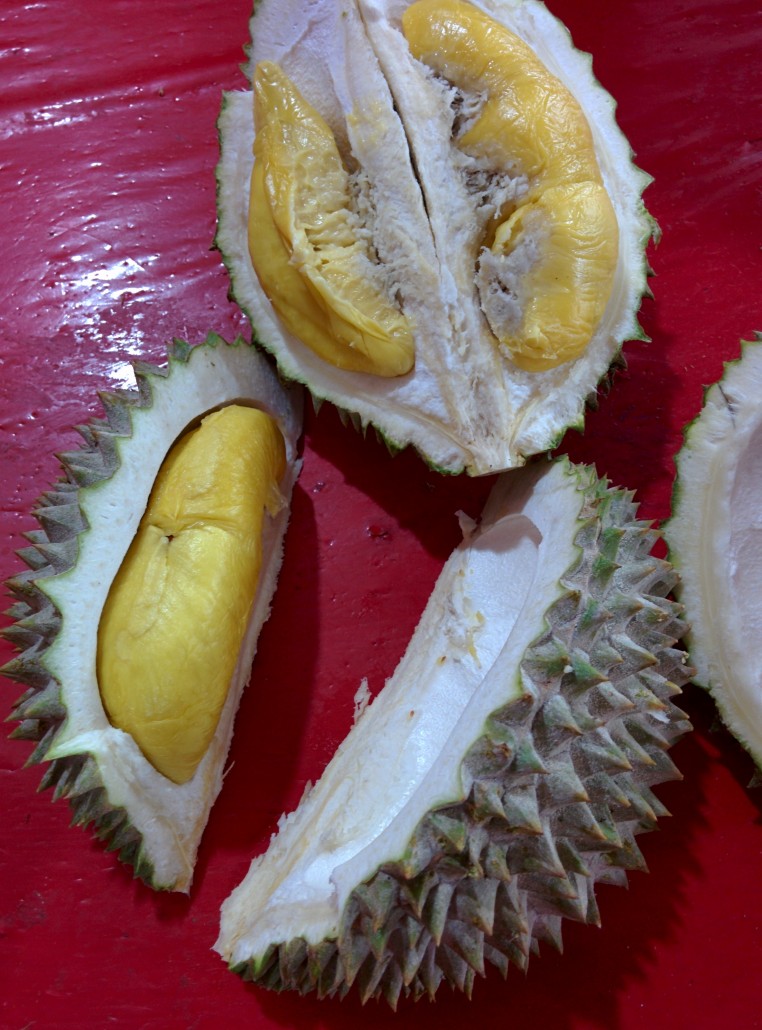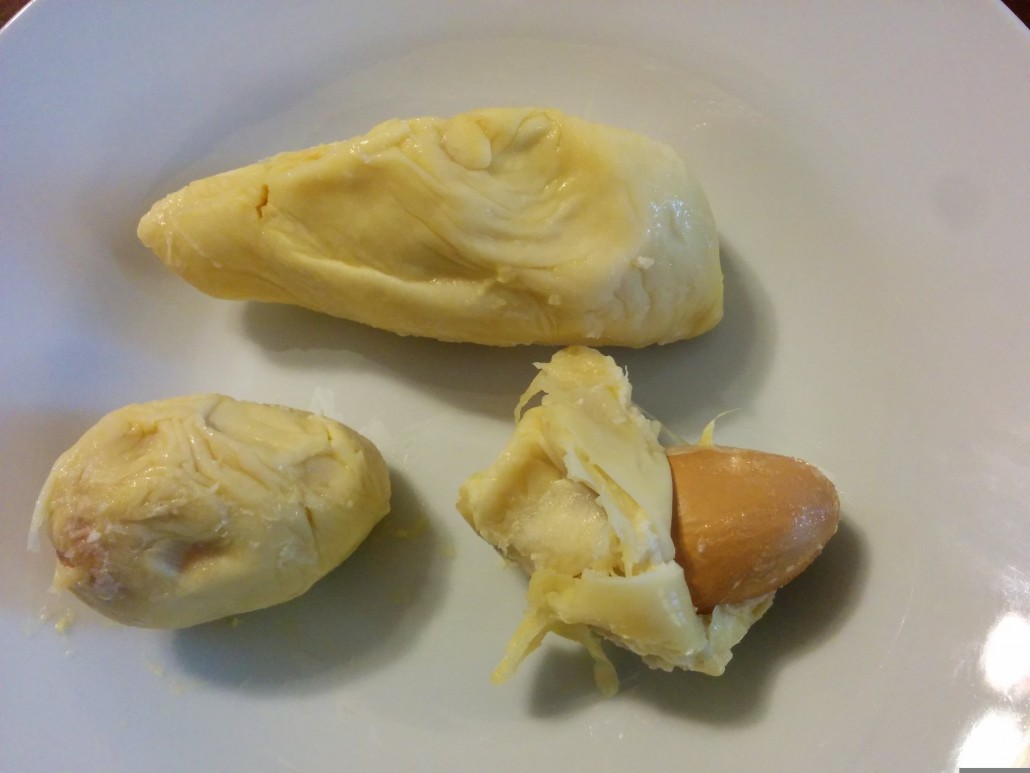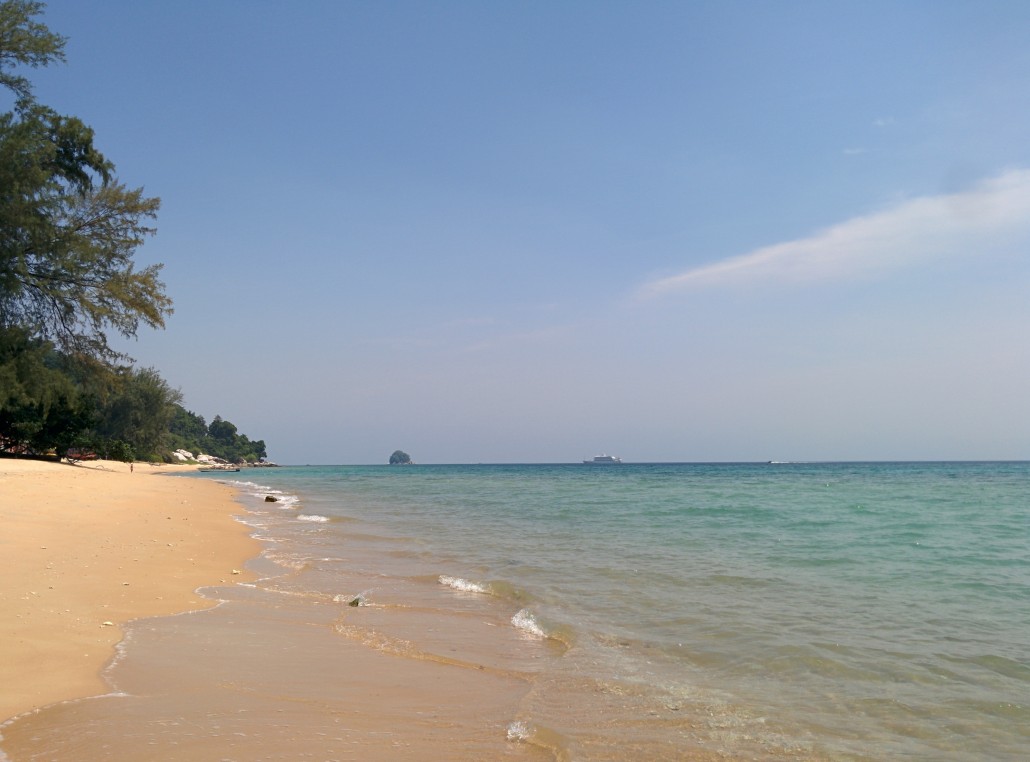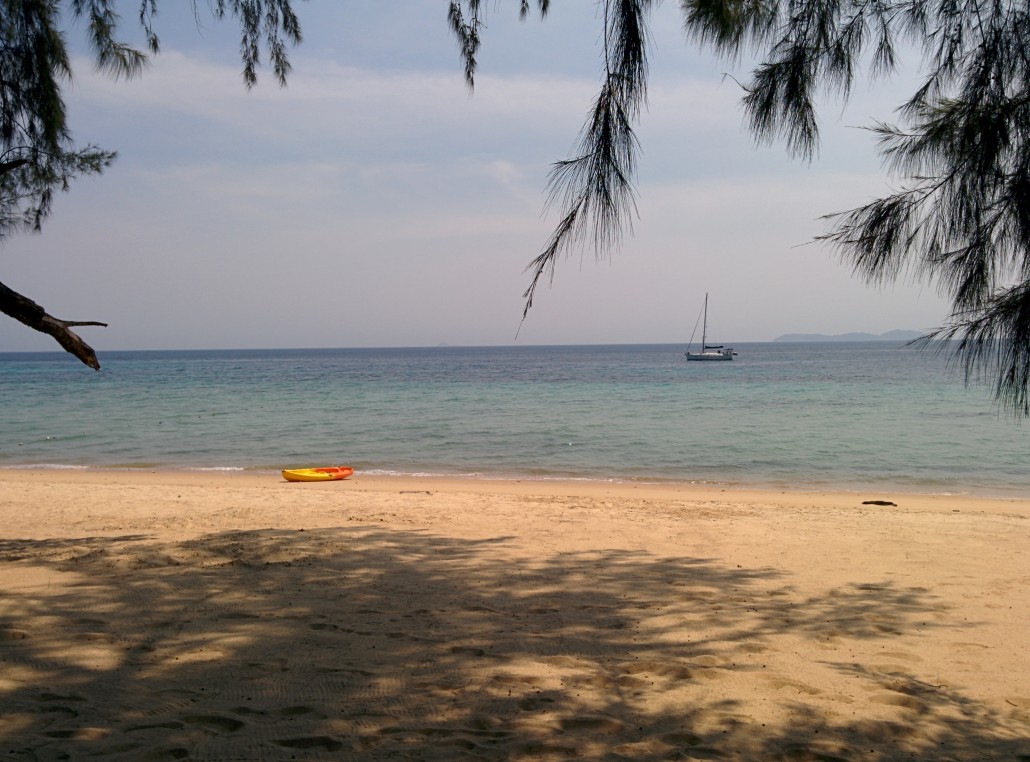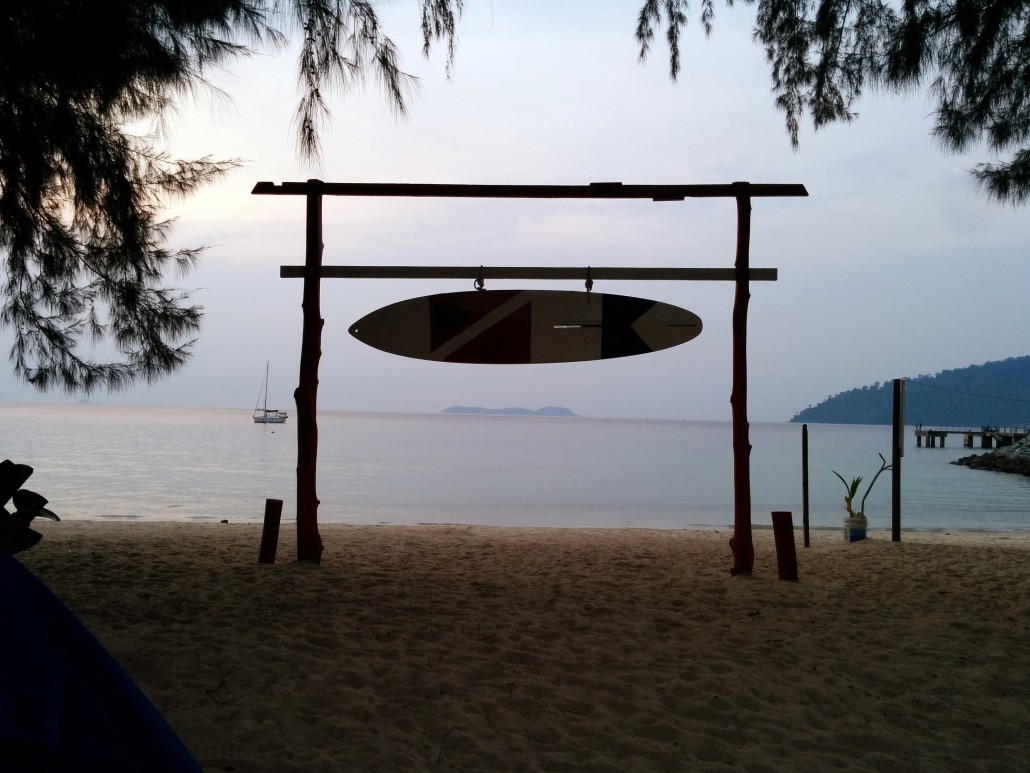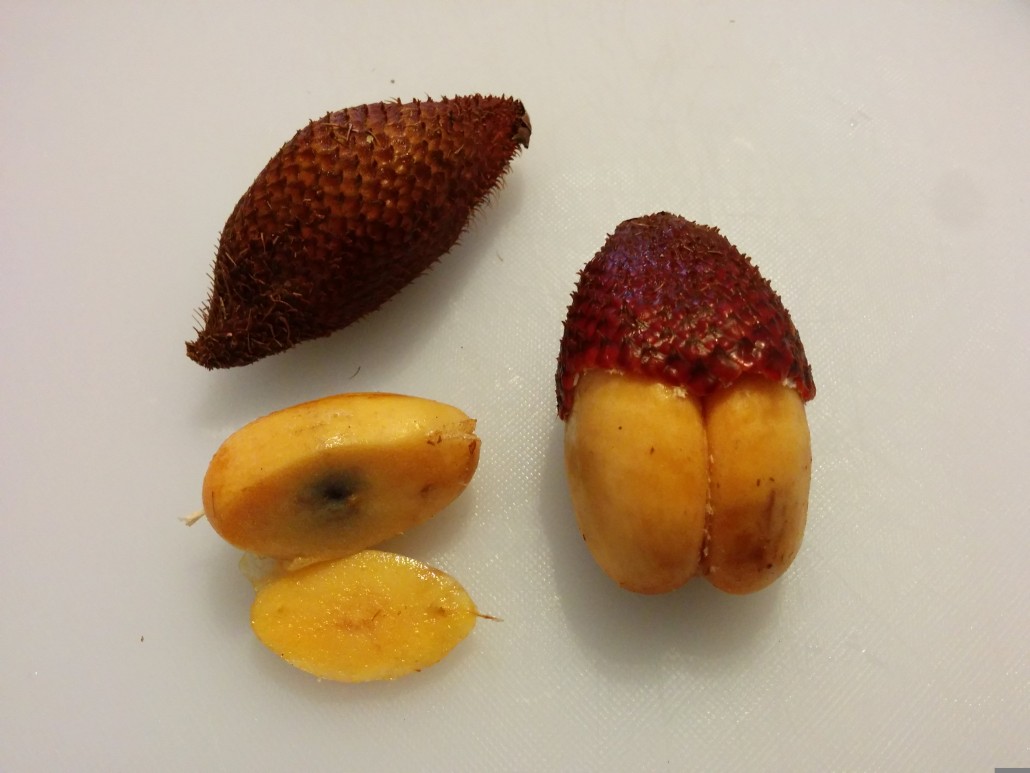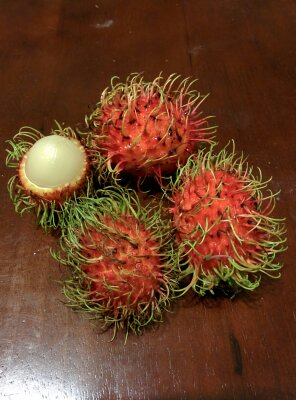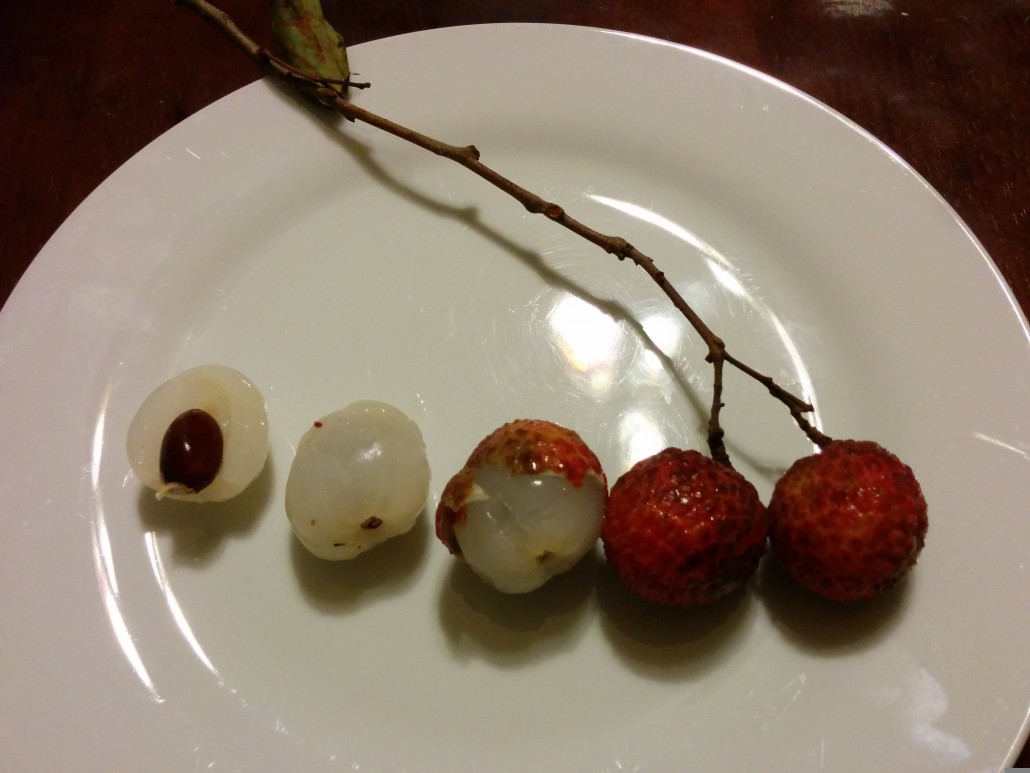Fruit – Mangosteen
Mangosteen is called the “queen of fruit”. It is the size of a tangerine. The exterior is a dark purple color, and when first picked is fairly soft, but it hardens over time. Inside, the white flesh segments of the fruit are edible, though the bigger ones (there are almost always only one or two big ones) contain seeds which aren’t commonly eaten. The flesh is juicy and soft, with a bit of softly stringy fiberousness (the fiber gets a little tougher in older fruits, and is more apparent in the larger segments). It tastes like a really good white grape juice, with a bit more floral notes. The fruit strikes almost a perfect balance between sweet and light acidity, and the flavor is strong but not overwhelming, so they appeal to almost all tastes. Unfortunately they don’t can/freeze/freeze dry well, and most of the flavor is lost in the process. Mangosteens were banned for import into the United States until 2007 or so, so they’re still not widely available there. However, if you do get a chance to try fresh mangosteen, do so! If you like fruit at all, you’ll probably like them.
More mangosteen info: https://en.wikipedia.org/wiki/Mangosteen

